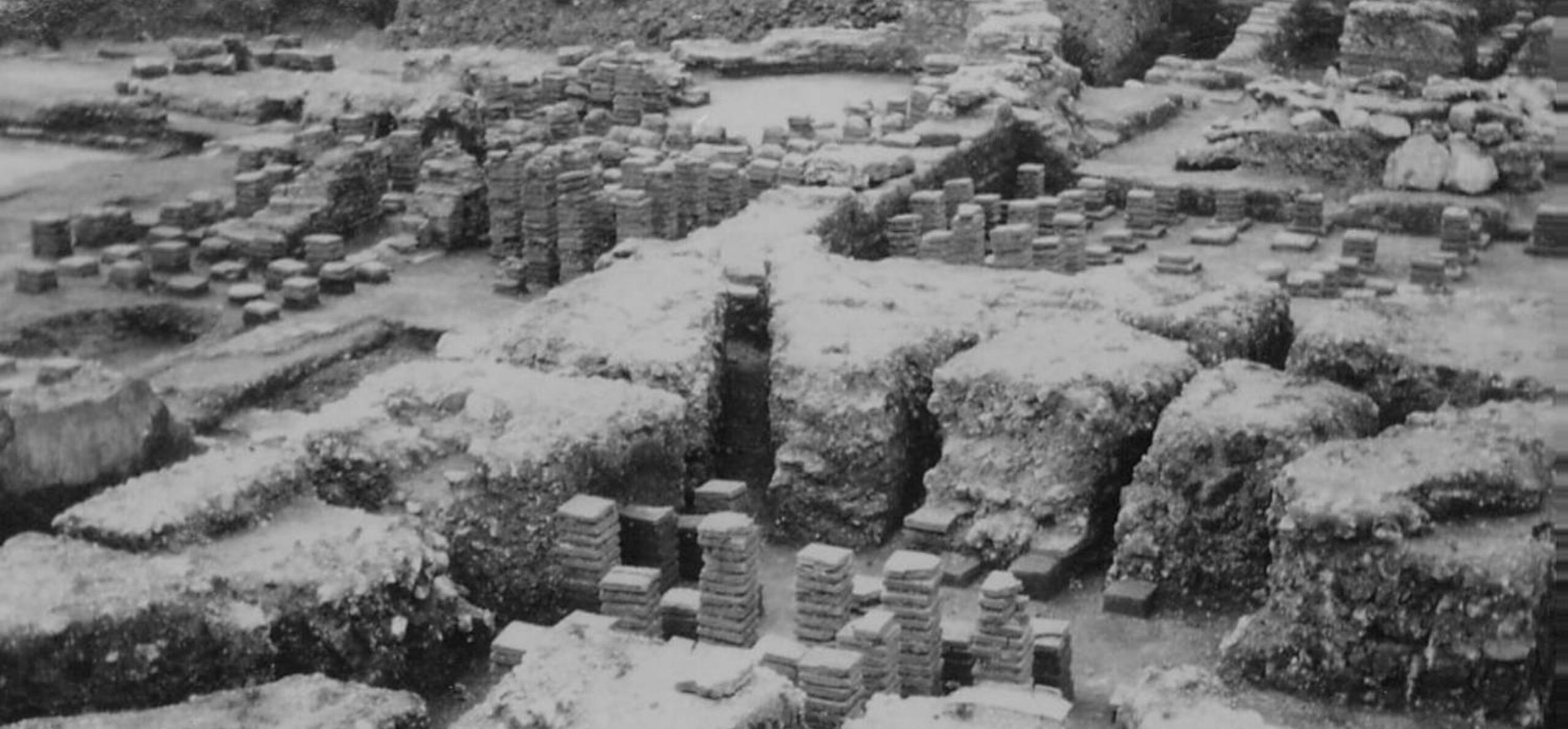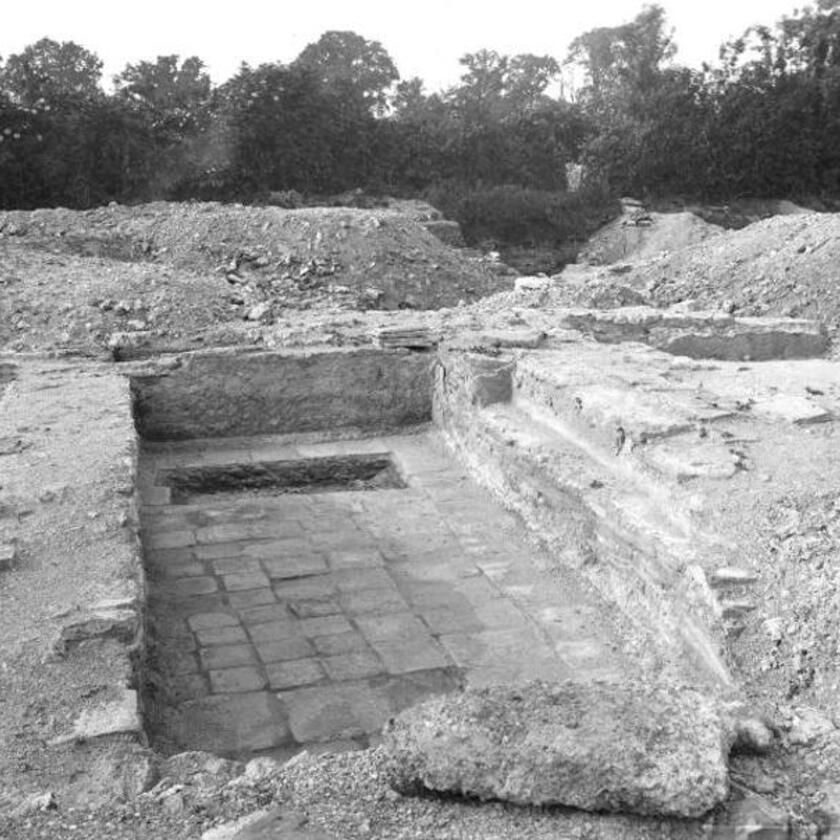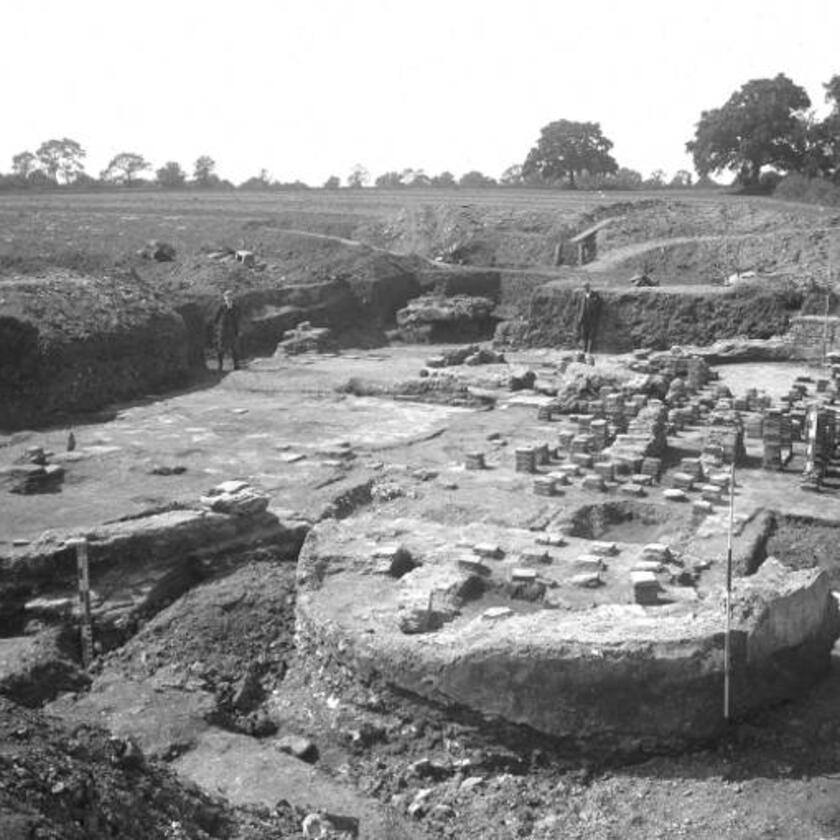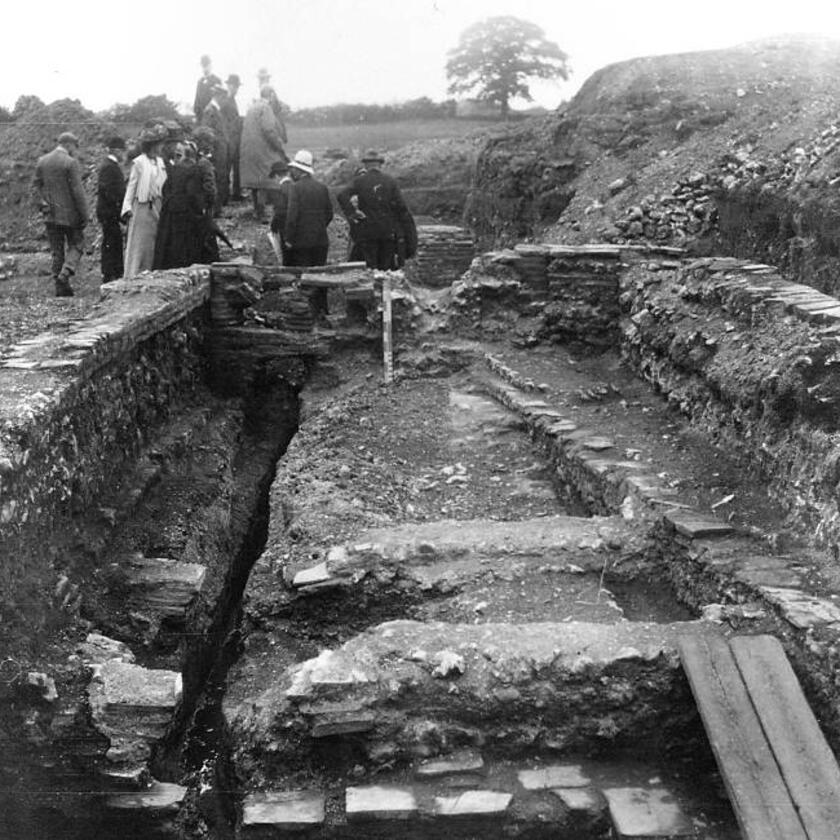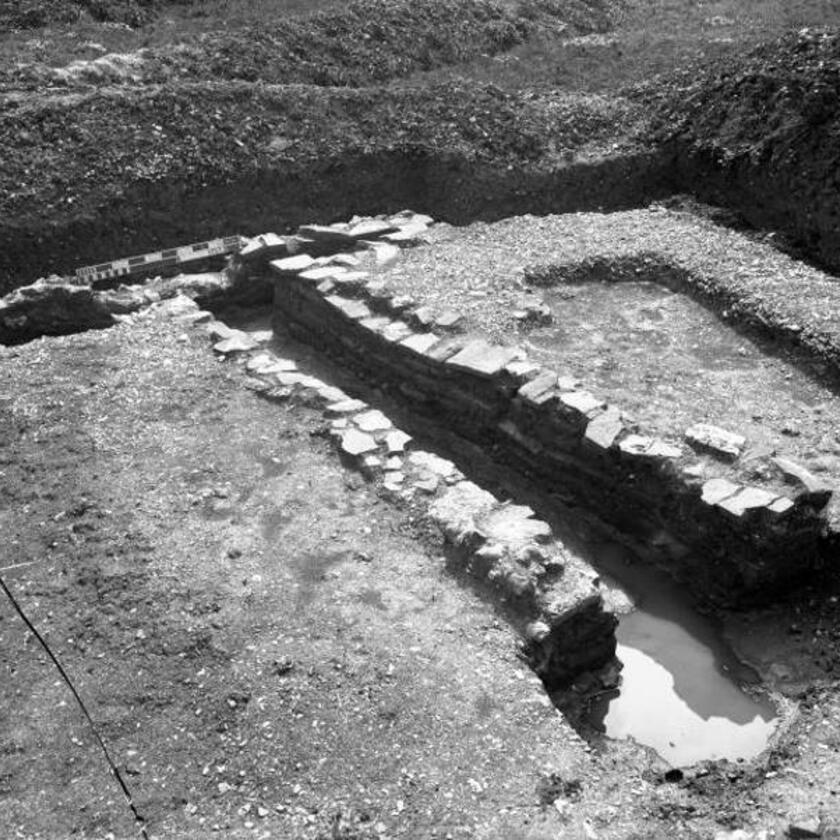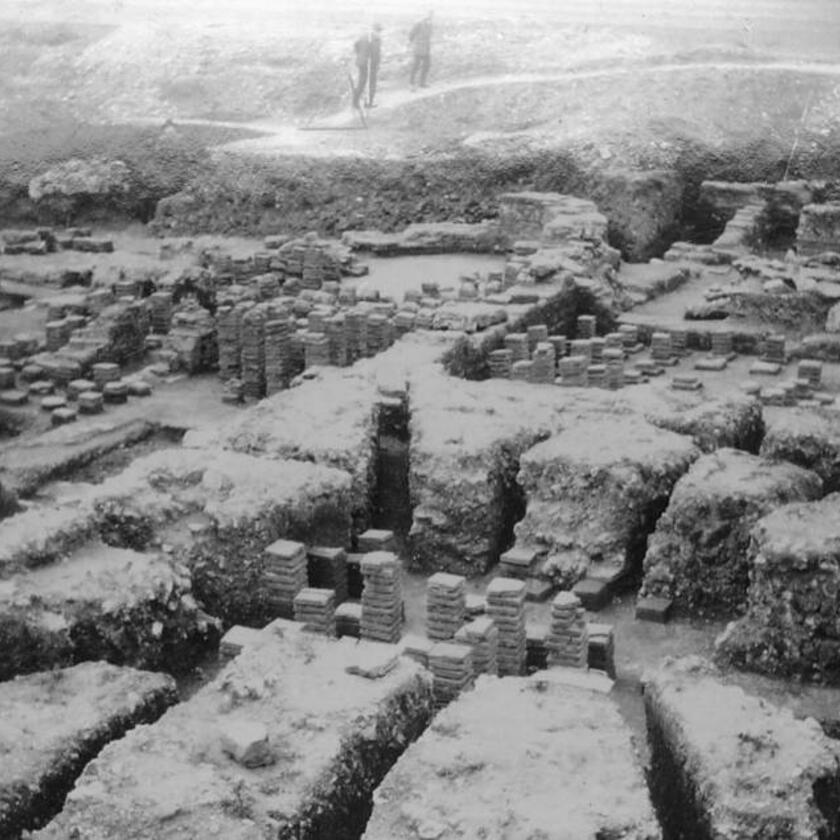Silchester is the modern name of the Roman town of Calleva Atrebatum. The town was abandoned after Roman occupation which means much of its history has remained intact. Visitors to the site can see the large defensive walls, banks and ditches surrounding empty fields. The site has been the focus of many years of archaeological investigation from 1800s to the present day.
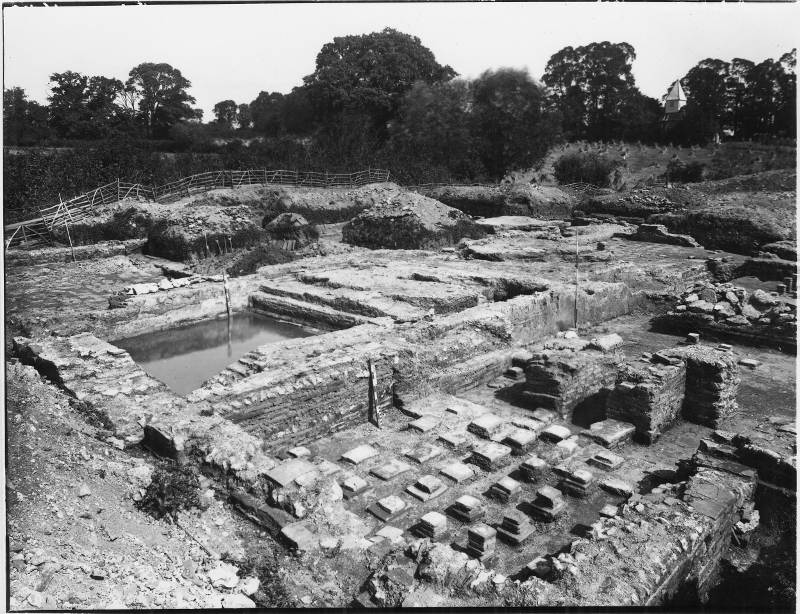
Silchester public bath house cold bath (frigidarium) and warm room (tepidarium) (REDMG : 1928.244.1650)
The Society of Antiquaries committed to uncover the 43 hectares (107 acres) within the walls. The public baths were a major focus of work for the Society between 1903 and 1904. The bath house is to the southeast of the site, near a natural spring where the land slopes away towards the southeast wall.
In Roman times it was popular to cleanse the body by perspiration. Public bath houses provided a place to exercise and create sweat (palaestra), an undressing room (apodyterium), a cold room with bath (frigidarium), a warm room (tepidarium), a hot room with bath (caldarium), a hot dry room (laconicum or sudatorium) and a latrine (latrina).
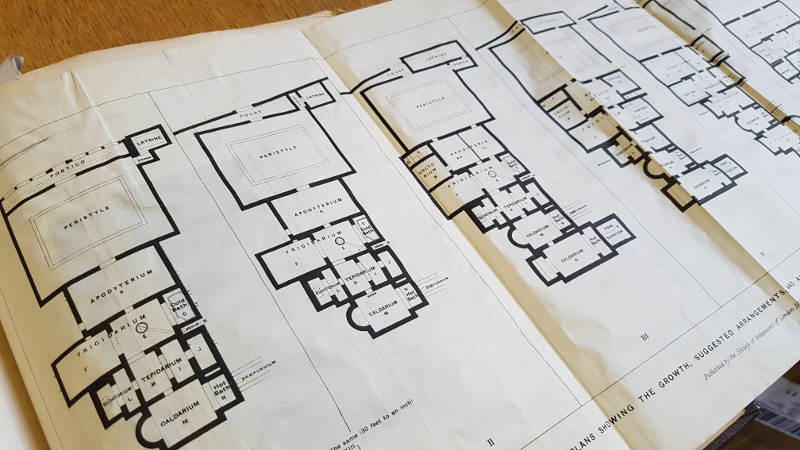
Plan showing growth, arrangement and alternations of the baths. Published by the Society of Antiquaries in 1905.
The Edwardian excavations of the public baths revealed much of the layout of the structure of the building. The building is thought to have been built in the early years of the town as its frontage lies askew to the street grid.
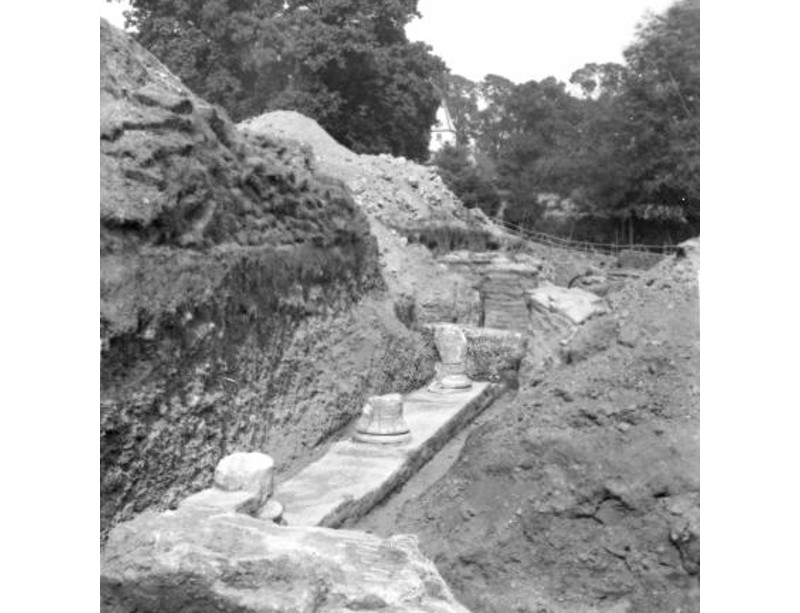
Bath house colonnade (REDMG : 1928.244.1663)
Along with objects excavated from the site Reading Museum has a large collection of contemporary photographs of the excavations.
During the summer of 2018 the University of Reading’s Archaeological Field School undertook an excavation of the bath house complex. They plan to continue exploring the remains in 2019 and are excited about digging beyond the Edwardian excavations.
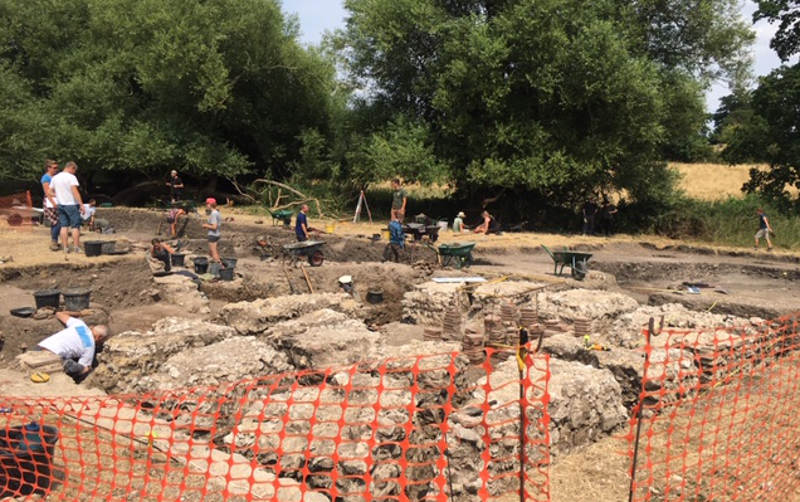
Silchester bath house dig in summer 2018
